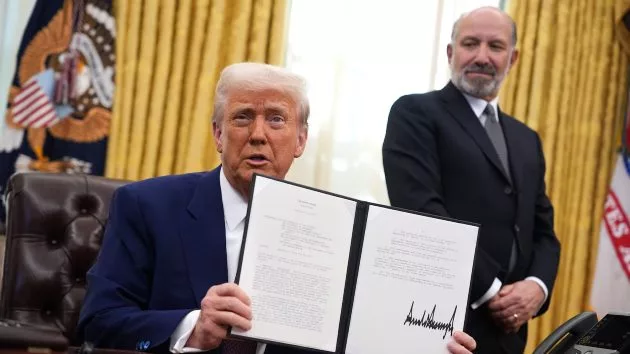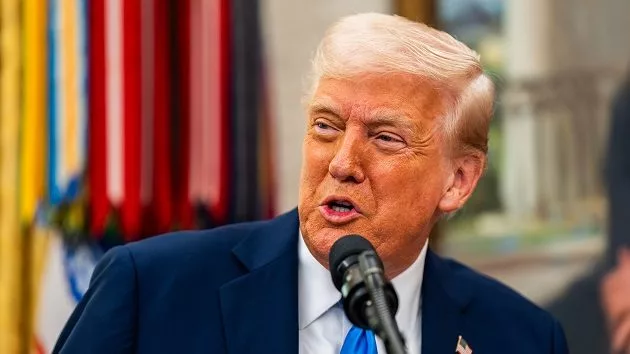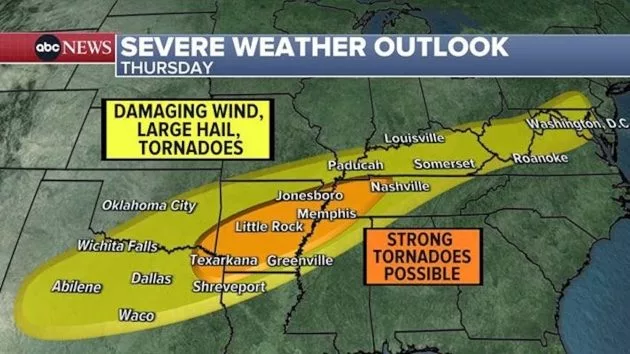
(WASHINGTON) — President Donald Trump on Thursday signed an executive order calling on his administration to determine “the equivalent of a reciprocal tariff with respect to each foreign trading partner.”
“In other words, we’re going to customize the reciprocal tariff based on individual trading nations, and that will depend on their profile,” a senior administration official said on a call with reporters previewing the action.
This means the administration plans to impose tariffs on other countries that match the duties they impose on American products. The senior official says this allows the U.S. to “customize” the tariff to each trading partner based on their actions.
Trump previously announced tariffs on China, Mexico and Canada. While the 10% tariffs on China have been imposed, Trump paused the 25% tariffs on Canada and Mexico. Trump has also announced 25% tariffs on steel and aluminum that are expected to take effect next month.
Many economists warn tariffs will likely raise the prices of goods for consumers, worsening inflation that already rose faster than expected in January.
As for reciprocal tariffs, the administration official outlined five types of actions it will take into account in determining the reciprocal tariffs for trading partners.
They include tariffs imposed on U.S. products; unfair, discriminatory or extraterritorial taxes imposed by trading partners, including a Value Added Tax; cost to United States businesses, workers and consumers, including subsidies and burdens and regulatory requirements; exchange rates; as well as any other practice that USTR determines is an unfair limitation.
Key players in this action will include the commerce secretary and United States Trade Representative, in consultation with the treasury secretary and Homeland Security secretary. Trump has nominated Cantor Fitzgerald CEO Howard Lutnick to lead the Commerce Department and attorney Jamieson Greer to be the U.S. Trade Representative.
Officials stressed the benefit of addressing this on a case-by-case basis, saying it “it opens the door for each country to basically correct the unfair trade practices that they’re engaging in.” But they did not rule out also pursuing a flat, global tariff either given the “national emergence we have with respect to the trade deficit.”
Asked for a timeline for when these tariffs might be implemented, the administration official seemed to suggest it would happen on a rolling basis, starting first with countries that have the highest deficits with the US.
“I think this will be done in what I have called in the past, in Trump time, which is to say, very rapidly, should be a matter of weeks, in a few months, but not much longer than that. We move quickly here,” the official said.
The reciprocal tariffs could hit developing countries the hardest — including India, Brazil and Southeast Asian countries.
There are many outstanding questions about the implementation of such tariffs.
One question is how Trump may continue to use these tariffs as a starting point for negotiations with world leaders. Officials said they hoped that the move would spark discussions between nations, saying the president would be willing to bring down tariffs if other countries do as well.
Copyright © 2025, ABC Audio. All rights reserved.



